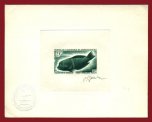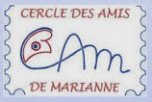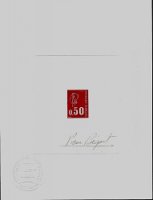
Sommaire
Introduction
The process to produce an intaglio-printed stamp is the following: a draftsman (who may or may not be the engraver) generates an original design. After its acceptance by the French postal administration, the original design is photographically reproduced on a mid steel plate (generally of size 70 x 80 mm), in the exact size of the stamp and in reverse.
The French Stamp Printery (I.T.V.F.) supplies this plate to the engraver who uses the photography to produce the primary die by means of calibrated chisels. A chisel is a small square or elongated diamond-shaped steel bar with a wooden handle which allows to engrave intaglio all the elements of the representation by removing shavings. The engraver uses a stereo microscope to allow the relief perception of engraving. Intaglio printing gives nuances of grey according to the depth of grooves and the closeness between them.
The production of stage die proofs from the die requires the employment of a particular press, called hand press, made of a table maintained by wooden pillars and provided with a mobile tray placed between two wooden cylinders, the movement of which is given by a steering wheel activated by the printer.
The mid steel plate must be completely inked with a greasy and soft, but non liquid, ink. The printer pushes the ink into grooves with a tissue pad, the plate being put on a stove so that the ink is softened by heat. Then the printer wipes the ink on the surface of the plate, first with blades, then with the palm of his or her hand, leaving ink only in the grooves. Then, he or she puts the plate on the mobile tray of the press, engraving upward. He or she recovers it by a beforehand moistened sheet of paper to make it more ink-receptive. He or she arranges felt cloths over all these elements, and he or she activates the press. The tray moves up, and the plate takes place under the upper cylinder which puts pressure, forcing cloths to push the paper which fetches the ink in the bottom of grooves.
Stage die proofs
During the elaboration of his or her die, the artist generally produces several stage die proofs to verify his or her work and, possibly, to make modifications. These stage die proofs are printed in black, on some more or less thick stationery Bristol paper, directly by the very artist on his own hand press. It is necessary to note that the plate of mid steel leaves on paper an imprint called die sinkage.
Pierre Béquet printed two stage die proofs for the stamp Marianne de Béquet on his personal hand press:
- One during the engraving process, showing the die in progress before the engraving of background:
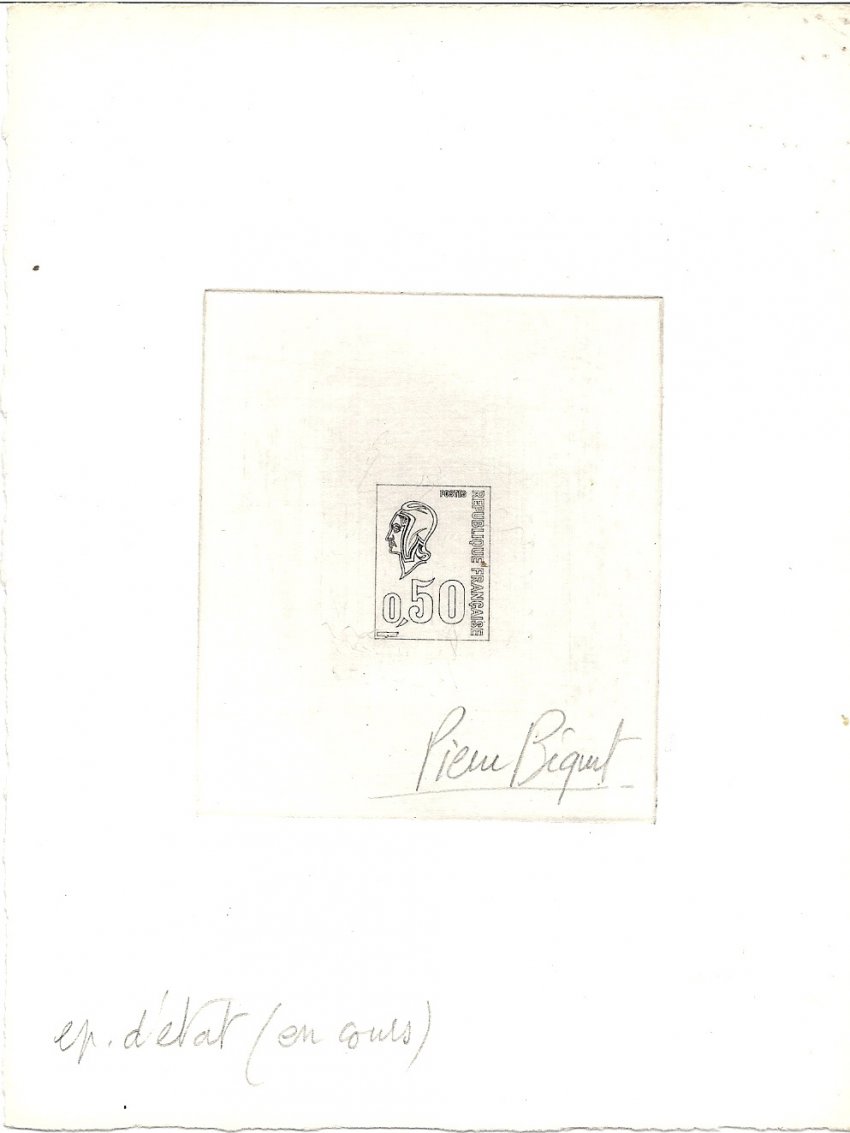
- stage die proof during the engraving of the stamp Marianne de Béquet
- A second one with the finished die:
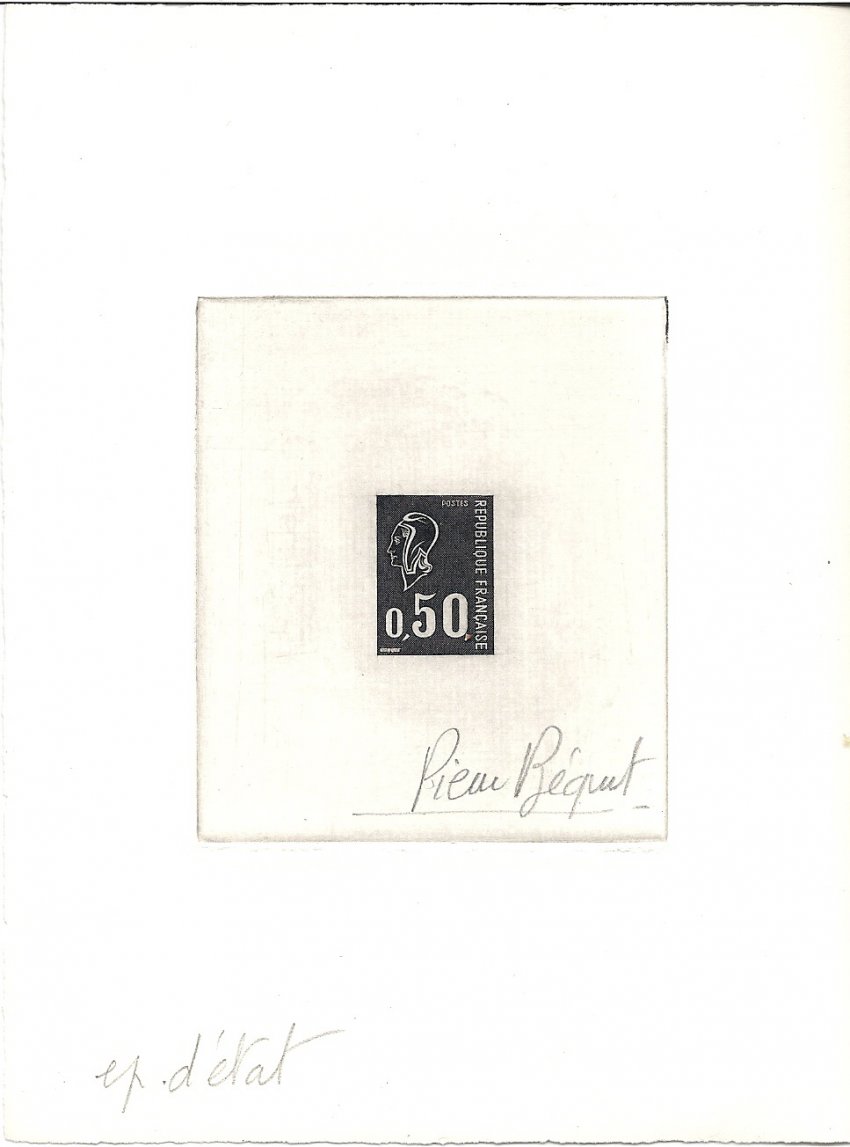
- final stage die proof of the stamp Marianne de Béquet
Let us denote that the artist’s signature is only sketched:
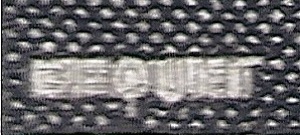
- magnification of the stage die proof’s signature (which is only sketched)
The primary die
The primary die is visible at the French Postal Museum:
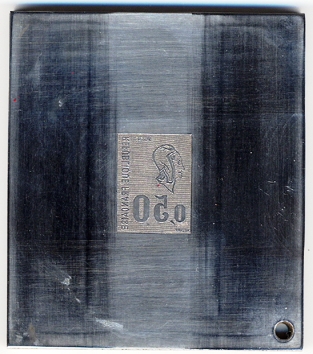
- 0,50F Marianne de Béquet’s die proof (Copyright Coll. L’Adresse Musée de La Poste, Paris / La Poste)
Artist’s die proofs
Artist’s die proofs were made in the French Stamp Printery, with uninked seals and marks; we can see below a red artist’s die proof and a black one (at least red, blue and black artist’s die proofs are known):
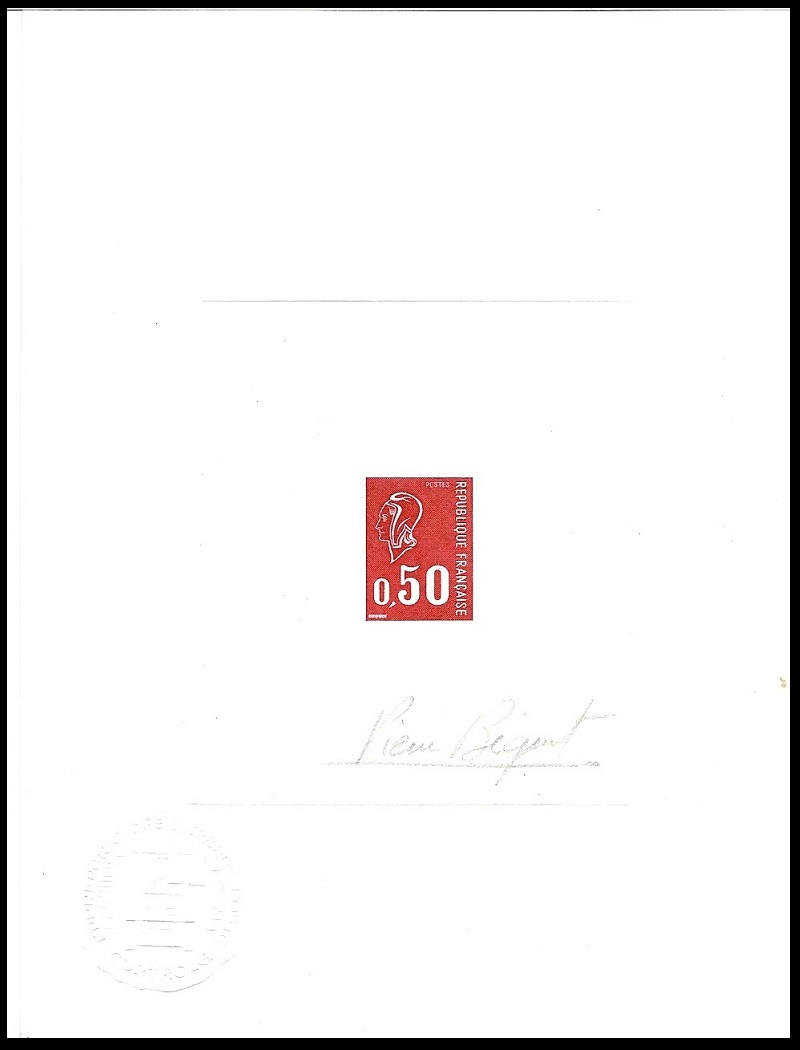
- a red artist’s die proof of the stamp 0,50F Marianne de Béquet
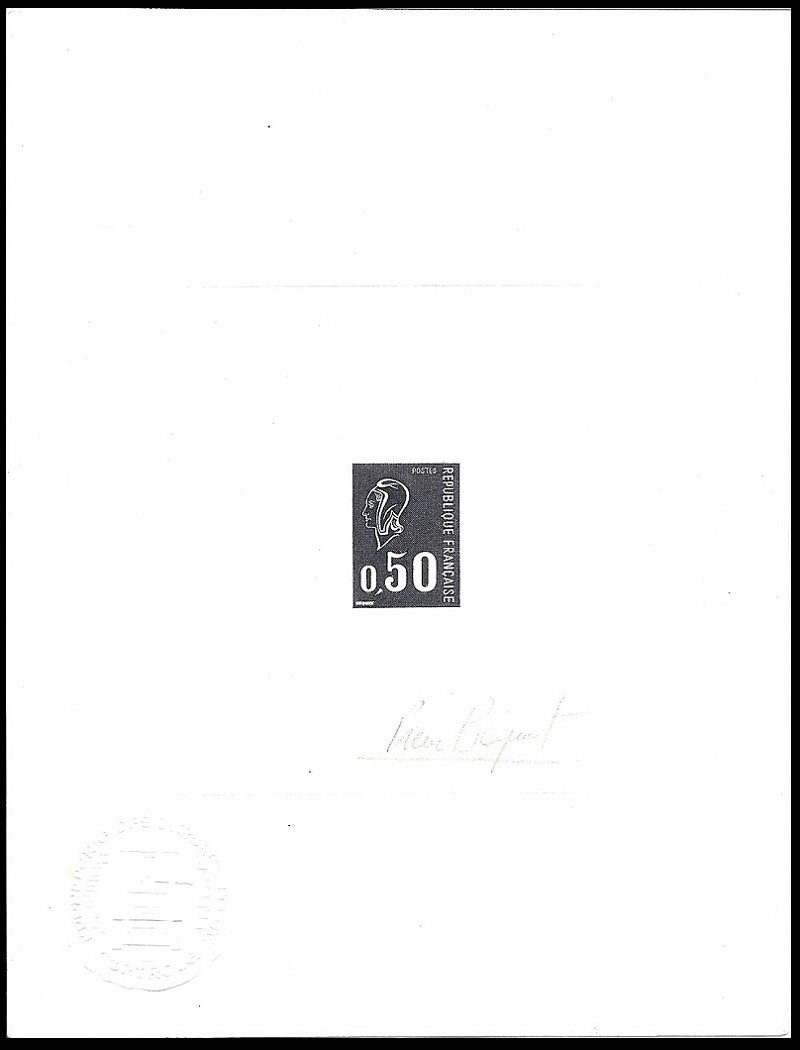
- a black artist’s die proof of the stamp 0,50F Marianne de Béquet
According to the site Die Proofs by Giorgio Leccese, there should be between 21 and 23 artist’s die proofs produced since they are made under the control of the French Stamp Printery (in 1961). However, these figures were never officially confirmed.
In fact, these artist’s die proofs are more complex than they appear at a first glance: several embossed or watermarked elements can be found, as will be shown on the following picture.
The following picture is an image map. 5 coloured areas appear when the mouse is moving over them. These areas are test areas, that means that by clicking on such an area, a new window is created in which a detail corresponding to the test area is shown.
As can be seen on the above image map, three embossed markings may be found on this artist’s die proof: the I.T.V.F. (the French Stamp Printery) stamp, a Marianne’s head and the words “IMPRIMERIE DES TIMBRES-POSTE- PARIS”. Finally, the paper is watermarked with the name of its supplier. Besides, Pierre Béquet’s signature enlargement is also shown on the image map: it is in the same state as on the stage die proof, that is hardly sketched.
Color die proofs
The administration is used to produce colour die proofs before launching the printing of the sheets which will be marketed. For the stamp 0,50F Marianne de Béquet, eight colour die proofs are known. They were all printed on November 23, 1970, on the TD6-1 press. Here is a dated plate block of one of these printings:

- dated plate block of 20 0,50F Marianne de Béquet’s color die proof stamps
Colours used to produce these colour die proofs are handwritten in the margin of the sheet: we so find, from left to right, BBR4SA (one BROWN colour), MBL5SA (one BLUE colour) and HRO5SA (one RED colour). On the other hand, the meaning of the first letter and of the last two letters (SA) of every package is unknown to me.
Cancelled sheets
To end this overview on the genesis of the stamp 0,50F Marianne de Béquet, I would like to show the other end of the line: a plate block dated June 18, 1974 and cancelled for disposal by means of a roulette of grid.

- cancelled plate block of 20 stamps (for throwing out) of the stamp 0,50F Marianne de Béquet
 Site map
Site map
 Contact
Contact
 Legal notices
Legal notices
 Editors area
Editors area


2015-2017 © Etude monographique du 0,50F Marianne de Béquet - All rights reserved


 Home
Home


